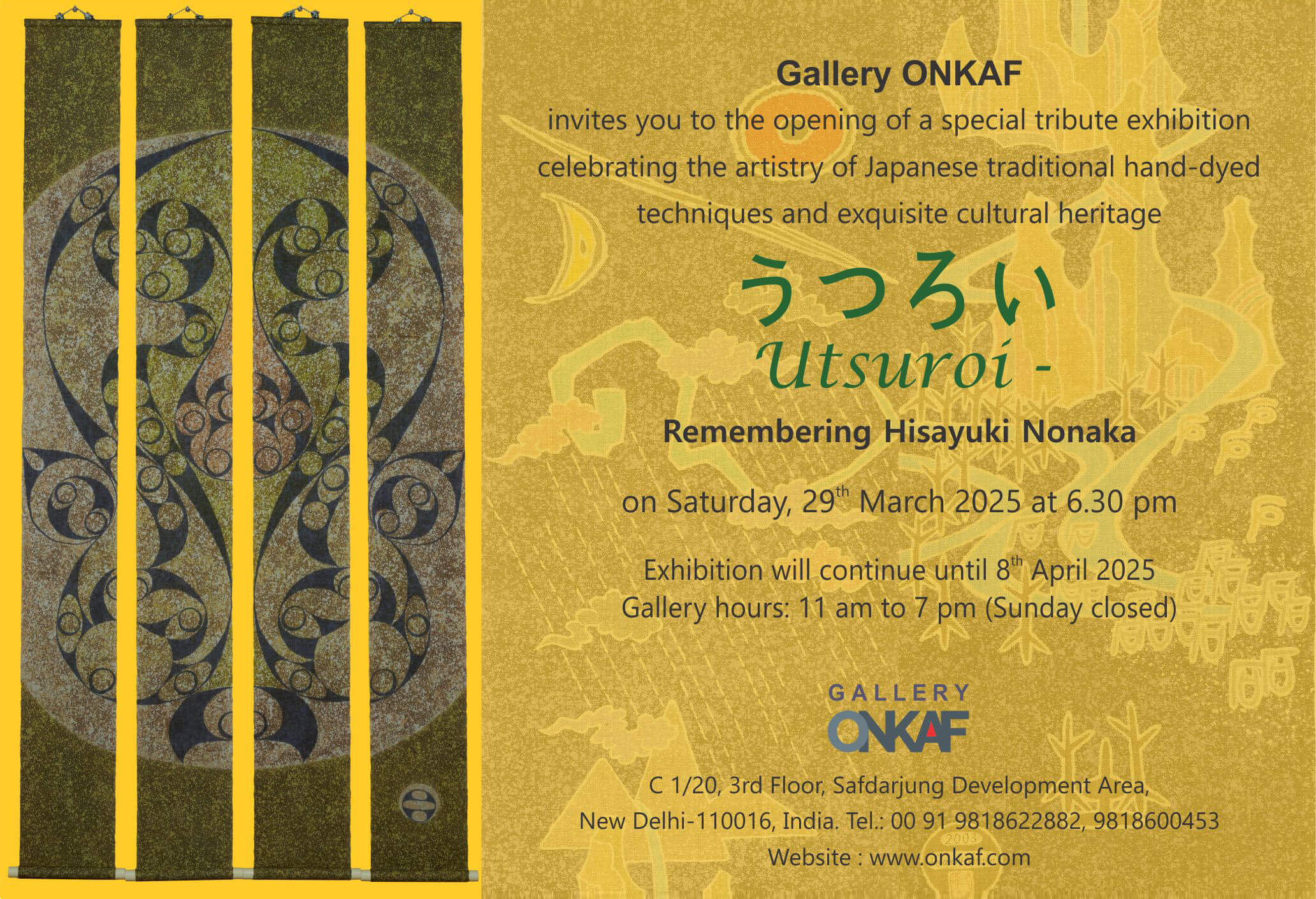Utsuroi – Remembering Hisayuki Nonaka29 Mar – 8 Apr 2025
Hisayuki Nonaka continued to work on dyeing from the time he graduated from university in 1971 until his death. At first, he worked commercially in the kimono industry, and after his first stay in India and after the Kobe earthquake, he began making dyed works as an expression.
During his first stay in India in September 1990, he was exposed to the various cultures he encountered there and further developed the traditional Japanese dyeing techniques he had cultivated over the previous 20 years.
It seems that he secretly wanted to give form to his experiences in India.
I am delighted to be able to make this presentation on his behalf after he passed away in 2018. I would like to express my gratitude to Gallery ONKAF for this opportunity to connect India and Japan and to everyone who supported me.
Miki Nonaka (wife of Hisayuki Nonaka)

About Hisayuki Nonaka
Born in 1949 in Nihonbashi Hisamatsucho, Chuo-ku, Tokyo. Graduated from the Department of Aeronautics and Astronautics at Tokai University in 1971. He joined the Ueno Textile Design Laboratory. Working under the late Ueno Seiji, he worked on a variety of dyeing projects, including kimonos, folding screens, and panels using hand-painted Yuzen, stencil-dyeing, and roketsu-dyeing. After the death of Ueno Seiji, he participated in the launch of “Seisen-kyo” (Yuzen dyeing studio, Ueno Textile Design Laboratory) and was involved in planning and running it until 1990. From September 1990, he stayed in India for about six months. After returning to Japan, he created works that combined dyeing and weaving, using Japanese and Indian terracotta as a theme. In February 1993, he held his first solo exhibition, “Dyeing Terracotta,” at Sakaimachi Gallery in Kyoto. Since then, he has held solo exhibitions every year. In 1997, he began producing stoles, tapestries, mats, and other items. Since then, with the desire to incorporate hand-dyed craftsmanship into everyday life, she has also produced accessories such as drawstring pouches and bags. Passed away on December 29, 2018, at the age of 69.
ExhibitionGallery
Exhibition Opening
Odissi dance by Miki Nonaka:
The opening of the exhibition was followed by an Odissi dance performance presented by Miki Nonaka, which made this tribute exhibition particularly special and added another layer of artistry and personal connection to the event. Her dance, Ganesha Mangalacharan and Basant Pallavi, became more than just a performance – it felt like an intimate, collaborative celebration of their shared passion for art and culture. The way the textiles and the dance complemented each other was powerful, symbolizing the beauty of unity and mutual respect across different artistic forms. This exhibition and performance were a remarkable celebration of cultural exchange, where the worlds of Japan and India met through art, movement and tradition.

